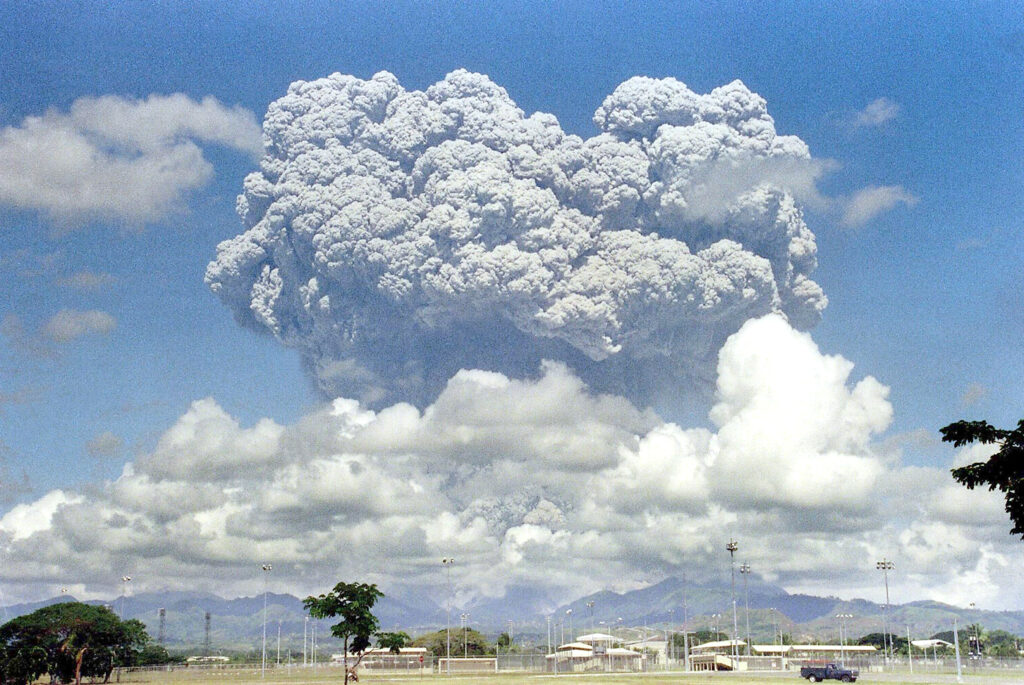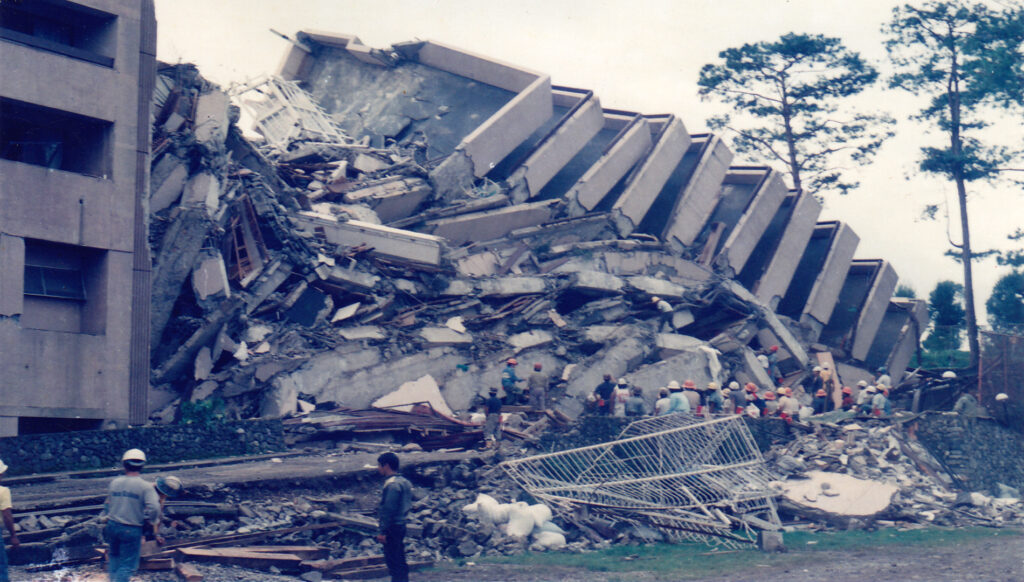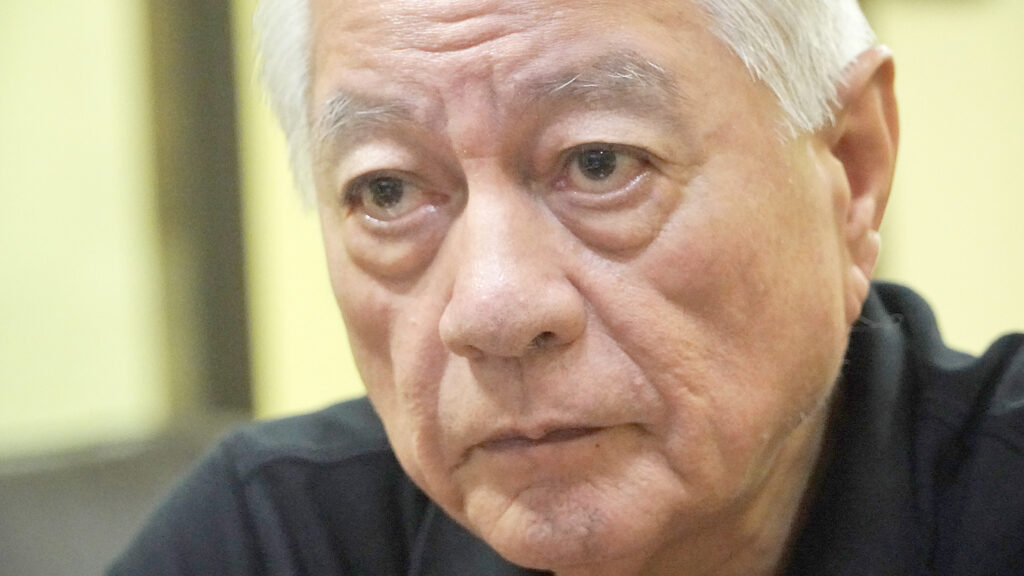Rafael Alunan had only been six months in government when the coup d’etat of December 1989 took place. He was an undersecretary of Tourism.
Not long after, Corazon Aquino appointed him as government spokesperson for the US Bases talks. It was a brief stint as he had to leave the government service because he needed medical attention for his Achilles tendon.
“I told the president it would not look good if the government spokesman hobbled around in crutches. She understood me. I reminded her of Ninoy, she said, whose Achilles tendon got cut and needed to be repaired. Her late husband underwent therapy for three months.”
When he returned to public service, he continued to work in Tourism until the department’s Secretary Peter Garrucho “was moved to the Department of Trade and Industry as its secretary.”
Alunan stayed as DoT secretary until the national campaigns started. “I chose to support Fidel V. Ramos. President Cory expressed her desire for me to become FVR’s spokesman.”
Non-traditional politician
Of the days leading to the start of the campaign, he recalled, “A lot of people within Cory’s group wanted (Ramon) Mitra. Because Mitra was very nice. He was a politician. He was a very good man. But then the mood of the people then was they wanted a non-traditional politician. And they saw Ramos as that person.
“And considering that he was known as the hero of the Cory administration from 1986 to 1992,” having helped restore freedom and then, continuing to defend freedom and democracy during the series of coups that tried to overthrow the Cory government, “many believed that he was the rightful heir to the presidency. Many people knew that it was FVR who always laid his life on the line many, many times for the country. So, he deserved to be the next president. And Cory knew about his commitment to freedom and the completion of her term. Notwithstanding the fact that even Cardinal Sin was pro-Mitra.”
But other than FVR’s consistent record in keeping the gains of EDSA, he had also seen him at work since they were together in the cabinet. “I was already the cabinet secretary for Tourism. He was my counterpart at the National Defense. And then, the killer earthquake happened. And then, Mt. Pinatubo erupted. We collaborated in taking care of our people who had been affected by both calamities.

“In both cases, tourists were trapped and we had to rescue them. The Department of Tourism needed the help of the Armed Forces of the Philippines. In 1991, Eddie Ramos was the secretary of the Department of National Defense.”
Rescuing civilians in Baguio

In 1990, a killer earthquake hit Baguio and its environs the hardest. Hundreds were killed and thousands more were trapped.
In the case of the earthquake, San Fernando in La Union served as the base of operations. “All the air assets started from there. We would take the helicopter to Baguio because the roads were impassable. And you couldn’t land fixed-wing aircraft. As the DoT secretary, my first responsibility was to rescue the stranded local and foreign tourists. We didn’t make any distinctions.
“Tourists were tourists. Until we decided we would not call them tourists but civilians. Our role was to rescue them.”
For one month, the team would experience the aftershocks, the water and food shortage. They did not just engage in rescue operations, they also sent relief goods to Baguio. “We solicited from corporations and our friends. We also worked with Ed Carrascoso of the Philippine Charity Sweepstakes Office. We also partnered with the church.”
Through it all, “Eddie Ramos was the guy in charge. He was the DND boss and the military was very useful in terms of manpower and equipment. It was faster to deal with the DND. The Americans were being difficult. Each time we wanted to use their aircraft, we had to ask permission in writing. And then they had to ask permission from Washington.
“So I was getting hot under the collar. I didn’t realize that we were also hot under the collar. So I went to Secretary Ramos and I said, ‘You know these Americans.’ He yelled back at me, ‘I know that! We’re on the same team.’ It was so frustrating.
“The C-130s of the Philippines could not land in Loakan Airport because we didn’t have the avionics to see through the clouds. The Americans had. So that was the only fixed-wing aircraft, a big one that could really land and bring in more supplies compared to the helicopters.
“That was when I saw how Eddie Ramos organized our efforts efficiently. He was very systematic. He was very focused. And he was a workhorse. Indefatigable. And it was a good orientation for me because when I eventually worked for him in the cabinet, I already knew his style of working. We were averaging four or five hours of sleep a day.”
Taking over Camp John Hay
Baguio had not settled yet when Mount Pinatubo erupted the next year. Badly hit were the bases. In Subic, Alunan worked with Dick Gordon. “The DoT was developing Olongapo Grande Island as a tourist site. That was really flattened. And that was the time also when we were negotiating with the bases. The Senate had not acted on the issue yet. So, I was dealing with the US commander in Clark. And I was dealing with the Subic Bay commander. And they were looking at their bases that had been flattened by the ashfall that collected on their roofs. And when it rained, the ashes hardened so they were like tons of bricks and the roofs collapsed.
In Baguio, the Americans also abandoned Camp John Hay. “President Cory called me, ‘Raffy, take over John Hay. The Americans are leaving ahead of schedule.’ I said, ‘With what money am I going to use to preserve John Hay?’ ‘Use PTA money.’ ‘Ma’am, do I have the authority to do that?’ ‘I’m issuing now the authority for you. Because if you’re going to wait for Congress, it’s going to take time. This is immediate.’
“Then, I followed it up with, ‘What about security?’ The biggest problem there is security. I envisioned two problems — squatting and illegal logging.
“These were the same fears of his friends who lived in Baguio. He considered Baguio his second home because he spent part of his youth in the mountain resort city. They did not welcome the idea of the Philippine government taking over John Hay. And they did not know yet then that I was the one taking over.”
For security, President Aquino told him, “DND Secretary Ramos is waiting for you now in Camp Aguinaldo. Talk to him.”
“So when I got to see him, he said, ‘What do you need?’ ‘I need Air Force personnel to protect the perimeter of John Hay. And then I’m going to get blue guards from the top blue guard company at the time, Leopard for the security of the inner perimeter. And they’ll all be dressed like the Americans, in white shirts with berets and navy-blue pants and boots. So that way, optically, parang (it’s like) the Americans never left.
“‘Okay, that’s good. That’s good,’ Ramos said. Then, he asked, ‘Where are you going to house the personnel?’ I replied, ‘How many are you willing to spare?’ ‘Tell me how many you need.’ ‘I need a battalion.’
“He said, ‘Yeah, you got it.’ He then appointed a general to be my adviser — General Gaudencio Tobias, an outstanding Philcag General, who eventually did a good job at the National Housing Authority. He was retired, but he was very respected by the Armed Forces because he was a no-nonsense guy.”
Wiped out by lahar
A year after, Mt. Pinatubo erupted. Again, he was in Baguio. “We were wondering why it was snowing. We learned later these were ashes. These reached Africa, and New York. And the earth cooled by about one-degree for two or three years.”
FVR was in charge of the National Disaster Coordinating Council as Secretary of National Defense. Alunan recalled, “One time, I was in a sitio where a bridge connected Tarlac and Pampanga. So, while the lahar was flowing below on that day, we were looking at and estimating what it would take to prevent the lahar from rising further. The next morning, when I went back, that sitio was gone. It had been covered by lahar that night.
“Even then, the lahar went on and on, until Fidel V. Ramos became president. It was one of the initial problems of his administration. FVR worked closely with the Department of Public Highways Secretary Ping de Jesus.
“Later on, as president, one of his feats or accomplishments was he was able to get Vigilar, also an engineer and was his underclassman in West Point, to come up with a diking system that really prevented the lahar from destroying entire communities.”
Bugles of history calling
In the early 1990s, as the country was counting down to the next national elections, Rafael Alunan joined the campaign team of FVR from day one.
Long before FVR decided to run, Alunan would send him little notes. “I’d be on this side of the conference table, and he’d be sitting there. I would write, ‘Do you hear the bugles of history calling?’ I’d fold it and ask a waiter to pass it on to him. I was teasing him but, in my mind, I was serious at the same time. I saw him as the guy, rightful guy. He’d read them and look at me. That was his mannerism, he would stare at you. That went on for about three months.”
He does not remember how he was invited to join FVR’s cabinet. “Parang (It’s like) it was just understood that we would help him in any way we could. I don’t even recall what he said. It was like he was deciding on whom he would ask to join him in the cabinet.”
He also does not know why he was given the top post at the Department of Interior and Local Government. “Maybe because I was with the Special Action Force, which was his group. When the members were in a light mood, they would say that SAF meant Sariling Army ni Fidel. But when the budget did not come on time, they changed it Subject to the Availability of Funds.”
Cleaning up PNP
FVR, in Alunan’s book, was an outstanding leader. The EDSA Hero went on to become a great President.
Alunan put it succinctly, “He was not a politician. He had an agenda. And the agenda was to rebuild the country. He was serious about nation-building. Very, very serious. We were all focused on that.
“He began his term with his reform program. The number one executive order that he gave for reform had to do with moral recovery. The bottom line was our social, political, economic and cultural problems took root from the loss of our moral compass. Ang puno’t dulo ng mga problema ng bayan ay ang pagkawalan ng tamang moralidad natin (The beginning and end of all our problems has been our lack of morals).
“So, with his backing us up during those four years I worked with him, we were kicking out people. We were kicking out bad blood. We were bringing in new blood.
Three months after Alunan took office and into FVR’s term, the President told his DILG Secretary, “You’re going to help me clean up the PNP. The PNP was the PC-INP under him. The INP was under him.”
“My first question was, ‘How are we going to do that, sir?’ And he said, ‘Well, we’re going to go through an early retirement program.’”
FVR gave his all-out support to the DILG boss. He said, “I’m going to help you there because I know these people. But you have to establish your mark as the guy in charge. So, first, you’ll call for a command conference. All the senior leaders, the commanders of the PNP, will be present in that command conference. And you will unveil the early retirement program. I will ask them to name eight people who will join you in a nine-man committee to review all of their dossiers. Then the committee will select those who will retire early.”
It was all that the President needed to say for Alunan to be inspired to get going. “For seven months, all we did was pour over the dossiers and interview them. And then, we made our decision. Sixty-three generals and colonels were retired early. I told them that it was not a political exercise. It was a professional exercise.
“My exact words were, ‘We are not going to do any publicity stunts at your expense. But we will expect you to follow. And not complain or obstruct. Do we have a deal?’ ‘Yes, sir.’ “From my end, we would just say that you’re giving way for younger blood to rise up. We are doing this for the institution you love.’ And they said, ‘That’s fine, sir.’”
Ending the brownouts
One problem that the new President inherited from the previous administration was the frequency of brownouts. These lasted for hours, sometimes even half a day. And it was every day.
As early as the time of President Cory, Ernie Aboitiz had been trying to get the attention of the President. Alunan was still the Tourism Secretary. “Sabi ni Ernie, ‘We’re working on a very tight deadline here. If we miss out on that deadline, we’re going to have brownouts. Because it takes time from the approval of the project to its rollout. We need so many megawatts to be put in place.’ He was right. And he said, ‘If we don’t do this now, it will take time to complete the order and then to work out the financing.’
“So, when FVR became president, he immediately acted. He knew what to do because he was an engineer. The thing about an engineering problem is that it can be solved. It’s very simple. It only takes time. But the time can be managed if you know how to do it properly.
“So he was able to control it after two years. He put it under control after two years. New capacity was put in place. We exited from the brownout period. That was what gave credibility to Ramos’ administration. The people saw that this was one administration that could solve problems.”
With the brownouts gone and the confidence in government returned, the international community took the cue and investments started pouring in.
“That’s why during FVR’s term, we became a tiger cub economy. Bumilib talaga ang mga foreign investors (Foreign investors were really impressed).”
(Next — Tackling the Mindanao problem and the Mischief Reef grab)
